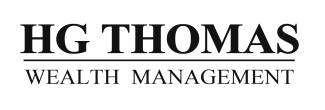Education
The education phase consists of crucial steps that not only helps us get to know you but helps you get to know us, too. It helps us determine if you’re ready and able to make use of The Empowered Method.
Discovery
Via an initial phone call or face-to-face meeting, we discuss your current financial situation, strategy, and goals. Together, we assess your strengths, opportunities, readiness, and challenges and determine how to move forward.
Data Crusher
We collect all necessary information from your statements and assets and narrow down your needs (e.g., income, living expenses, and debt). Through HG Wealth Management’s portal, you’re able access all of your accounts—including your bank accounts, 401(k) accounts, IRAs, brokerage accounts—in one place, and we collaborate, communicate, and plan on our secured server.
Back to Basics
After evaluating your existing knowledge, we work to close the gap between what you already know and what you still need to know to fully understand the investments from which you could benefit. This includes a rundown of stocks, bonds, CDs, variable annuities, mutual funds, and exchange-traded funds (ETFs), what it means to have a balanced versus a conservative moderate portfolio, and the basics for asset allocation, diversification and rebalancing, and dividends.
Evaluation
The evaluation phase digs a little deeper and is critical for determining how we can apply The Empowered Method to help achieve your financial security and goals.
Risk Evaluation
People are subject to many risks, both financial and general. Financial risks include longevity risk (i.e., outliving your money), inflation risk, market risk, withdrawal rate risk, and order of return risk. General risks are essentially life risks, such as health risks, death, or having no or incorrect estate documents. A risk questionnaire helps us identify and quantify what risks you’re subject to.
Risk Assessment
Life happens, and we’ll discuss all of its what-if scenarios, particularly the internal and external factors we can and cannot control. Together, we’ll identify and quantify risks. We’ll then help you decide whether you’ll transfer or assume those risks. For example, when you own a car, there’s a risk of getting into a car accident. You can transfer the risk by acquiring car insurance, or you can assume the risk by not getting car insurance (i.e., leading you responsible for paying for damages). Life risks are not limited to negative scenarios, such as falling into poor health or dying prematurely; positive scenarios can induce risk, as well, like what’s referred to as longevity risk (i.e., living longer than expected and lacking the funds needed to sustain oneself, in that event). This strategy allows you to best prepare for life’s inherent risks.
Stress Test
The stress test puts two personalized plans side-by-side to help us determine which plan is more likely to be beneficial for you in the long-term.
Execution
In the execution phase, we solidify your plan, set things in motion, and help you stay on track.
Master Plan
A living plan that can be changed at any time, the master plan is straightforward and incorporates strategies. It addresses not only retirement, but social security, the benefits of a Roth conversion, and more.
Implementation
We open the account(s), do any necessary paperwork, and address any issues from the evaluation stage that are resolved in the master plan. For example, if you need your will set up, we’ll meet with estate attorneys.
Stay on Track
It’s important to consider how an action will affect you before making it. We help you stay self-sufficient while responding to life events or situations that may arise, such as the earlier-discussed risks or an unforeseen emergency, so that when you retire, you’re able to stay retired.

